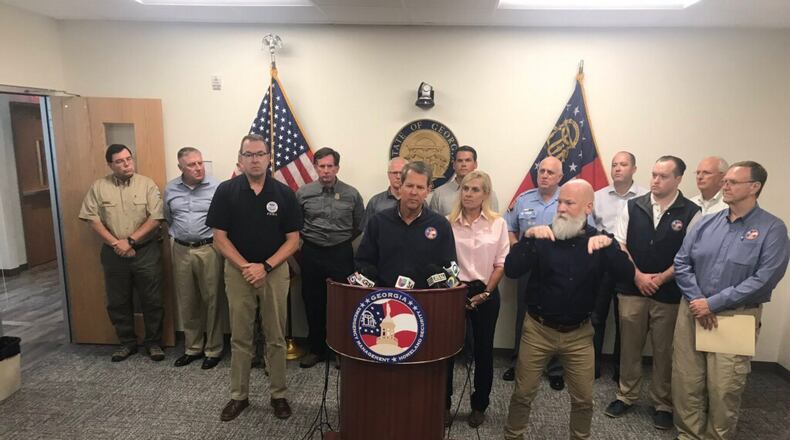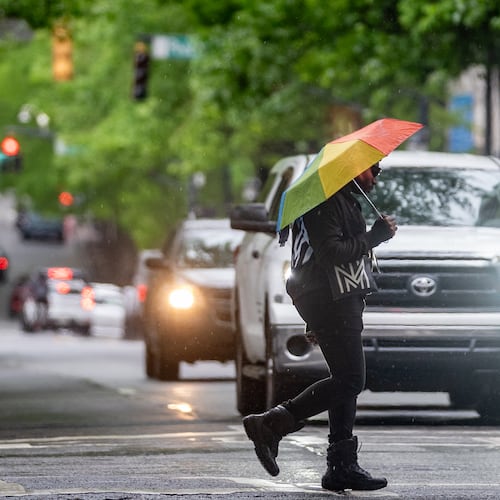Gov. Brian Kemp renewed calls for coastal Georgia residents to evacuate even as the state prepared to reopen I-16 to eastbound traffic, as he warned Wednesday that storm surges and rising tides from Hurricane Dorian could fuel widespread flooding.
Speaking at the Georgia Emergency Management Agency offices in Atlanta, the governor said the monstrous storm could spark “life-threatening” floods and damaging winds when it rakes state shores later tonight. He said the highway into the Savannah area was being reopened to clear the way for more emergency vehicles.
“When this storm passes, we want to be able to get first-responders, supplies and equipment in if we need it,” he explained, adding that there was still time to flee the coast.
» PHOTOS: Hurricane Dorian’s outer bands reach South Georgia
“The westbound traffic has been very light today, so even if we have people still leaving, they’re not getting in gridlock traffic,” he said.
He was echoed by Georgia’s top transportation official, who urged residents who leave to “be patient” and wait to hear from local and state officials before returning.
“This is not a welcome mat to say, ‘Head back to the coast,’” Russell McMurry, Georgia’s transportation commissioner, said of the interstate re-opening. He said engineering crews will inspect bridges and roads before clearing them for traffic. “Please heed that warning.”
The slow-moving hurricane is now pummeling Florida’s coastline after causing extensive damage in the Bahamas earlier this week. It’s expected to clear Georgia’s shore by Thursday afternoon.
It has expanded in size and accelerated, albeit only to 9 m.p.h., as it has weakened to a Category 2 hurricane. Forecasters warn of dangerous winds and life-threatening storm surges even if it stays deep in the Atlantic. Any wobble in its trajectory could send it hurtling onshore, with potential for even more mayhem.
Kemp has taken a better-safe-than-sorry approach as Dorian crept closer to Georgia. The governor late Sunday ordered evacuations for residents east of I-95 in six coastal counties, and on Wednesday expanded his emergency declaration to nine additional counties.
“In this game, you don’t want to be slow to the preparations or slow to the response. We’ve learned that before,” he said, adding that his team is “battle-tested” in part by two previous hurricane-related evacuations of coastal Georgia since 2016.
“We’ve got to hunker down, chop some wood and get through one more.”
Kemp was joined by Acting FEMA Administrator Pete Gaynor, who warned that Dorian is “moving dangerously close” to Georgia’s coast and urged residents to stay vigilant.
Gaynor said about 10,000 federal and National Guard troops are activated in four states and 40,000 utility workers are positioned, calling the government’s response a “true partnership” with state and local officials.
State meteorologist Bill Murphey said he’s most concerned about the threat of storm surges that could cause widespread flooding along low-lying areas.
“Everyone needs to stay away from the beaches,” he said. “That will be the most dangerous area.”
About the Author
The Latest
Featured



